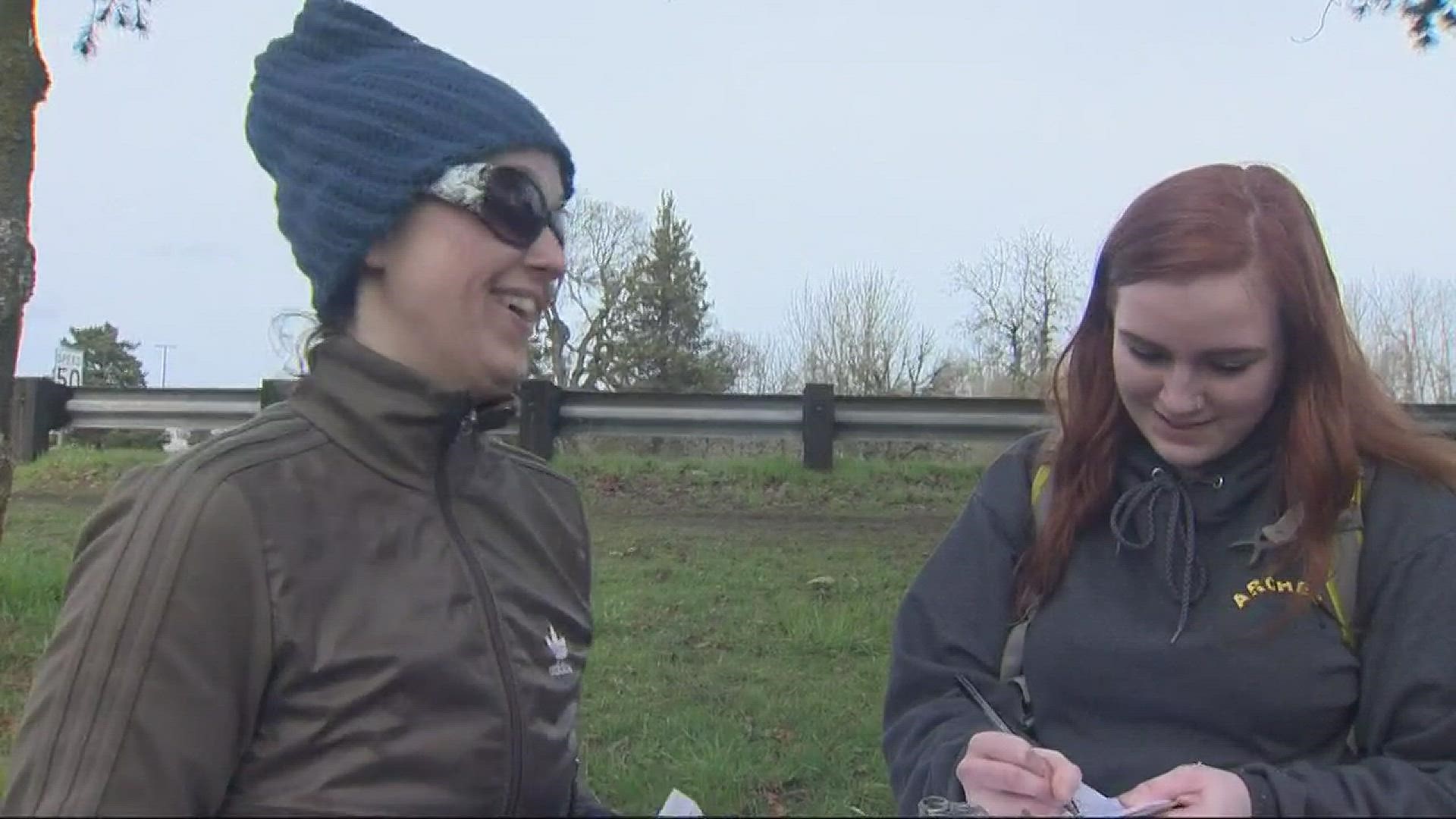More than 200 volunteers hit the streets and wandered camps in Marion and Polk counties Wednesday surveying and counting the area’s homeless population.
The effort comes per a federal mandate, known as the Point-In-Time count. Officials with the U.S. Department of Housing and Urban Development use results of counts across the country to allocate funds tied to housing and other services.
Still, as impactful a process as it is, Linda Strike with the Mid-Willamette Valley Community Action Agency, who coordinated this year’s count, pointed out it’s also a fragile one.
“We're fortunate. The weather is moderate today,” she said. “If it's really super bad weather, it impacts the count. Camps having to move [impacts it, too].”
Point-In-Time count survey by KGW News on Scribd
It’s a predictable hurdle that arose again ahead of this year’s process, when crews with the Oregon Department of Transportation cleared campers out of a longtime site under a Highway 22 overpass.
ODOT spokesman Lou Torres confirmed Wednesday the agency didn’t know the count was looming. If staff had known, he said crews might have waited.
“We don't know where those folks are, and not having those numbers makes it look like we have fewer homeless individuals in our community,” said Strike.
Jackie Morgan was one of the campers swept off the site.
She and two others moved about 100 yards away from the bridge and were told they could stay there until Thursday morning.
“There needs to be more resources, period,” she said. “There needs to be more resources for laundry, hot showers, housing, mental, medical.”
But Strike on Wednesday said she’s encouraged by another new program, mandated this month by HUD.
It’s called "Coordinated Entry" and it centers around a multi-page survey that advocates can give to homeless people year-round.
It gathers information about the person’s overall health, mental health, history with drugs and trauma, and their criminal background, among other categories.
“And we can get them connected with healthcare providers and on-going health supports,” she said. “They’re going to have a better quality of life. They’re more likely to stay stably housed, and they won’t be using the emergency room as often, so it’s a great win for them.”
Strike said there’s been no indication from HUD that the "Coordinated Entry" system will replace the PIT Count, but she said identifying underlying factors that contribute to a person being homeless will be a game-changer.
“We’re all working kind of in the same direction with the same efforts and it will be a much more effective system for everybody,” she said.
Strike said the results of the 2018 PIT Count likely won’t be available for months.
To see the results of the 2017 count, click here.

